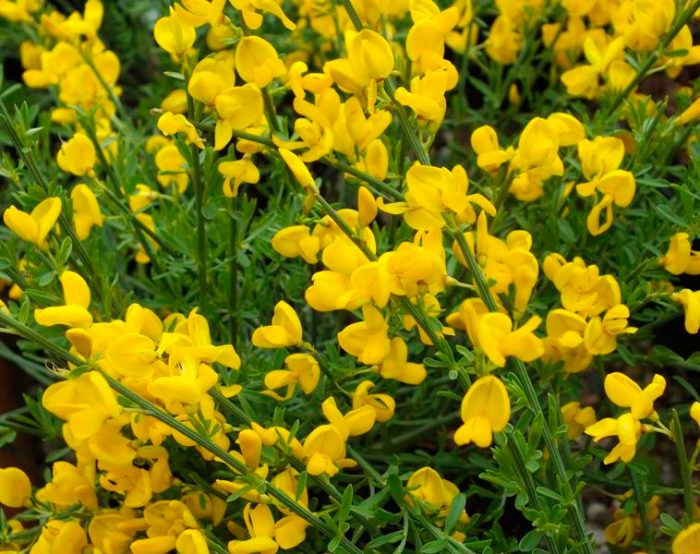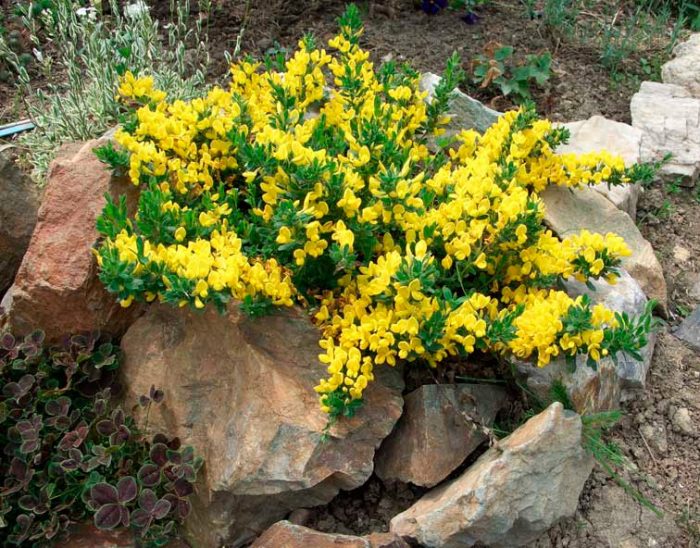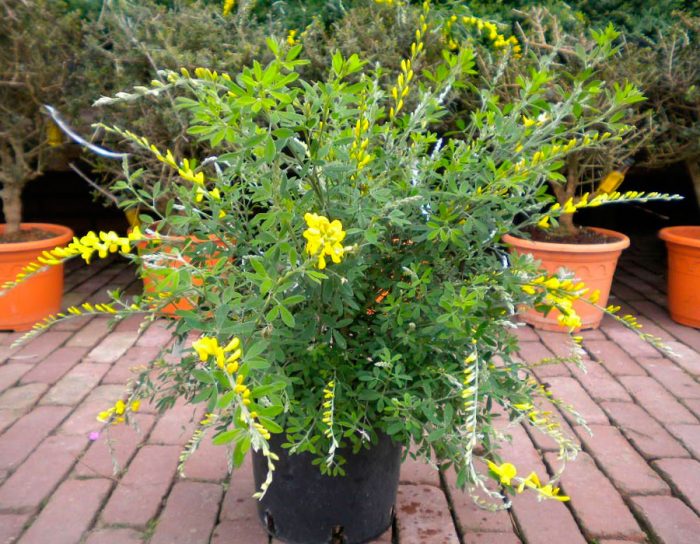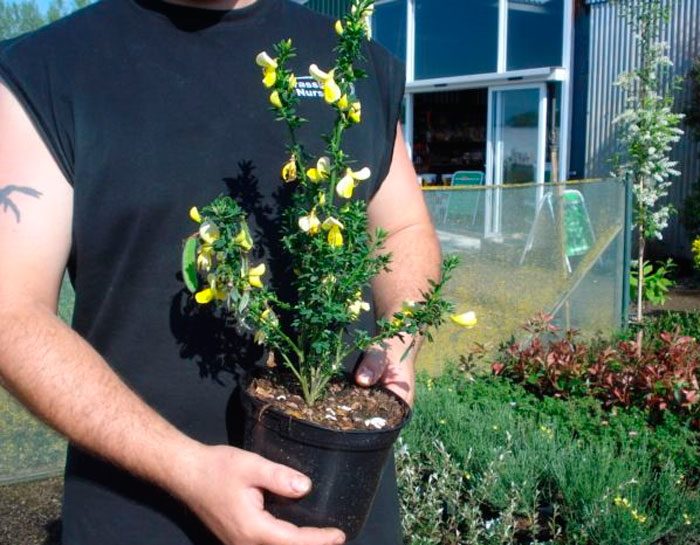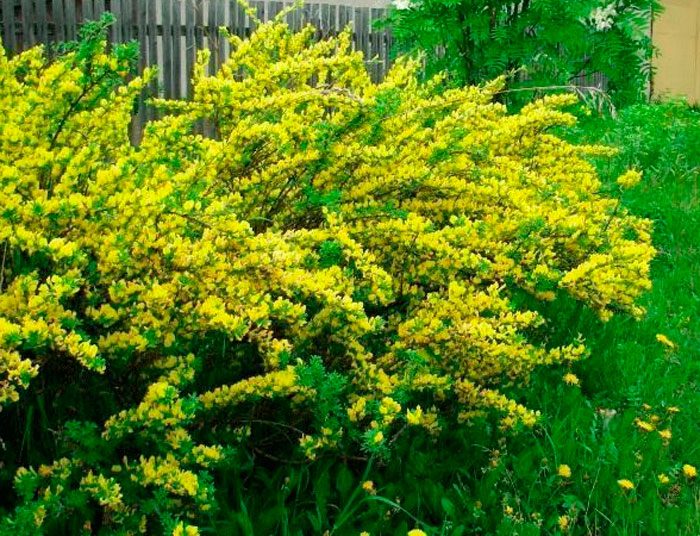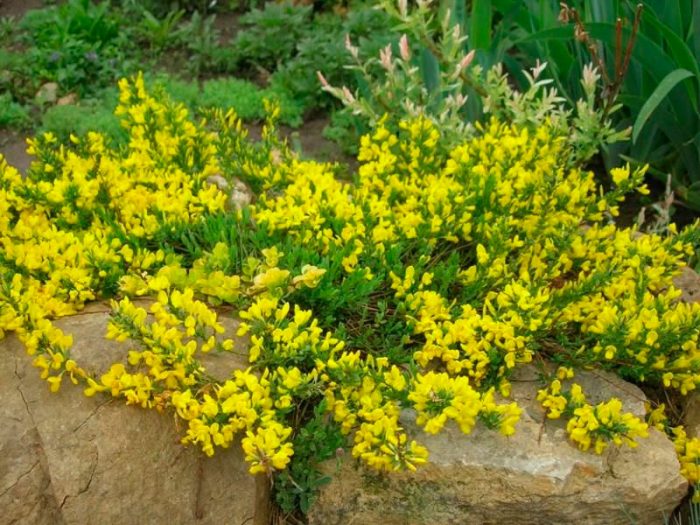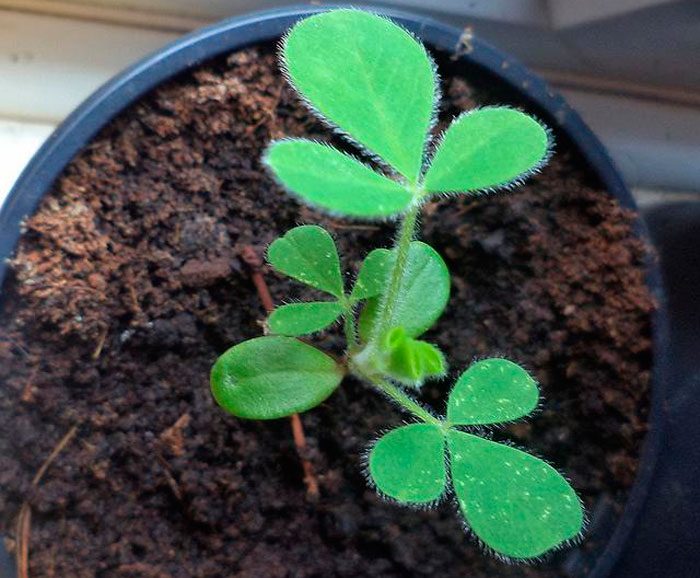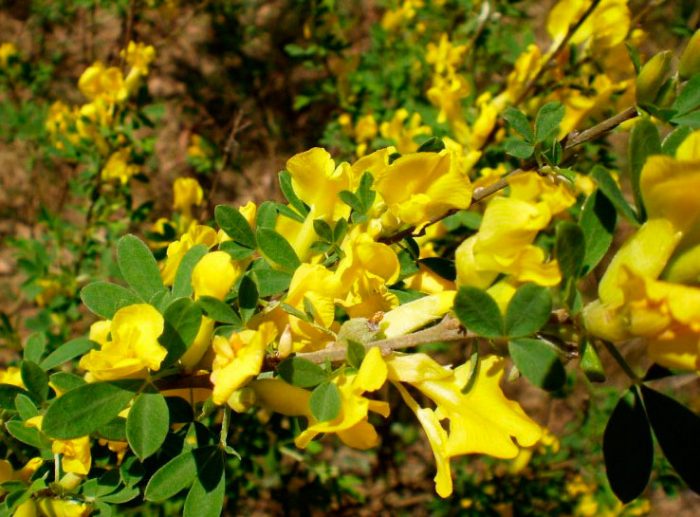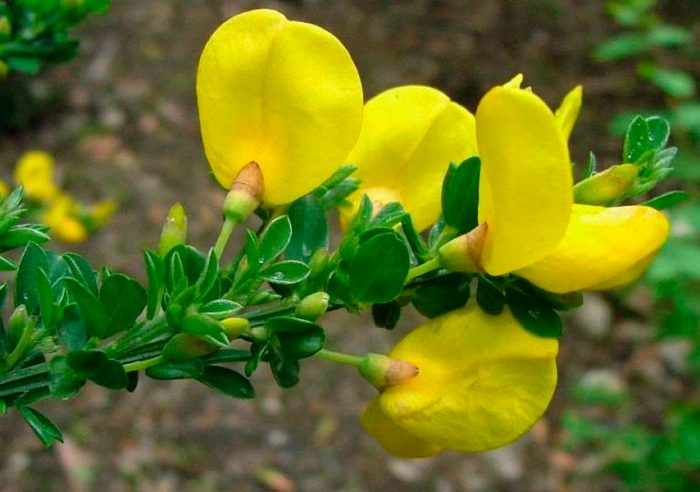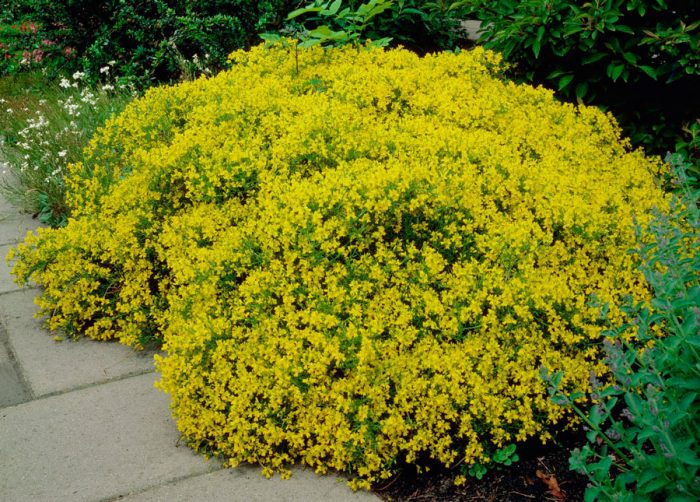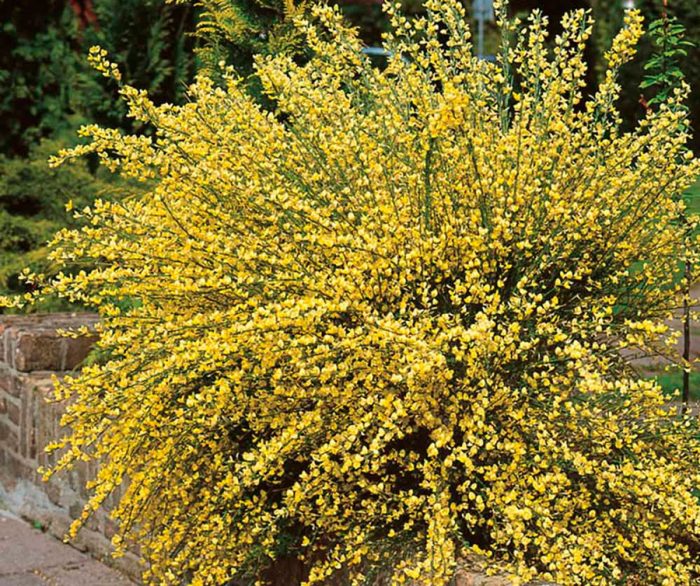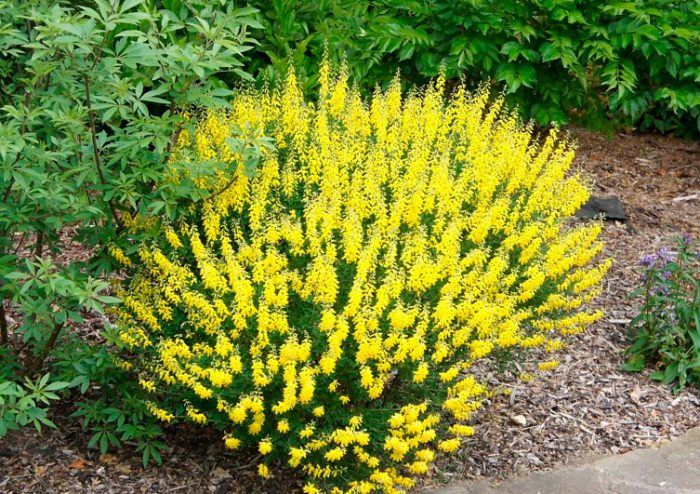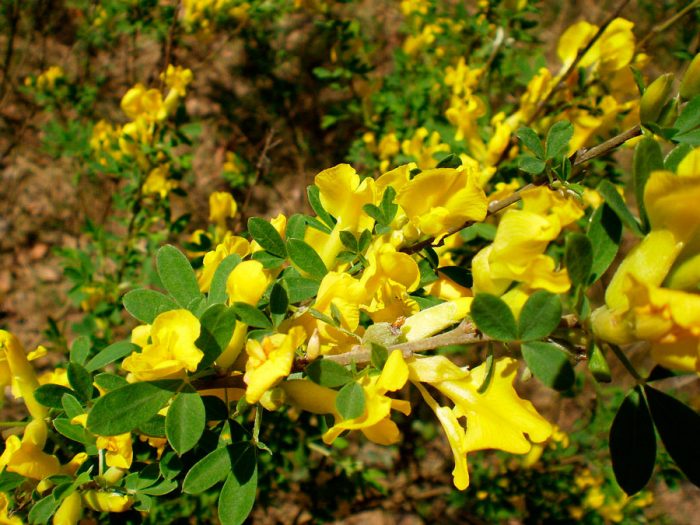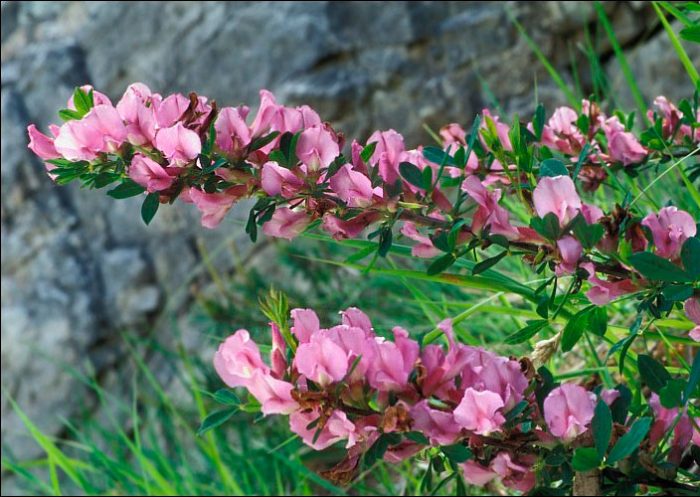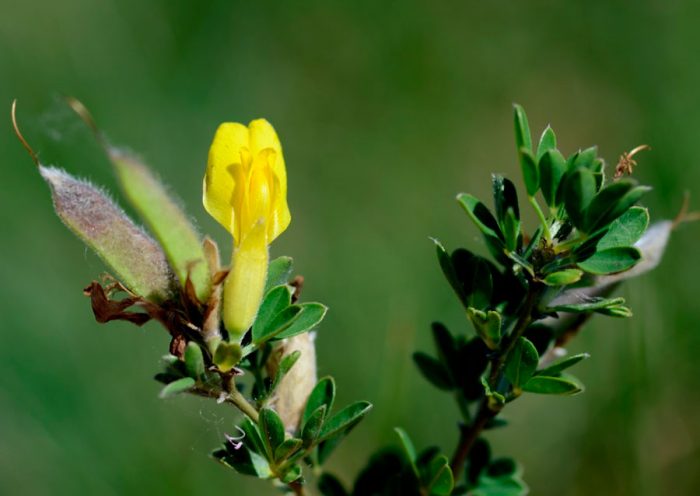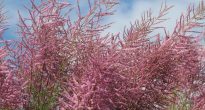The broom plant (Cytisus) is represented by shrubs or deciduous or evergreen trees, it belongs to the legume family. Broom prefers to grow on sandy or sandy loam soils. In nature, such a plant is found in Western Asia, Europe and North America. According to information taken from various sources, this genus unites 30–70 species. The scientific name of such a plant comes from the place name of the island where it was first discovered. About 15 broom species are cultivated by gardeners. Most of them are used in decoration, in landscape design, and also such a plant is used to strengthen sandy slopes.
Content
- 1 Features of broom
- 2 Planting broom in open ground
- 3 Caring for broom in the garden
- 4 Types and varieties of broom with photos and names
- 4.1 Coronal broom (Cytisus scoparius)
- 4.2 Creeping broom (Cytisus decumbens)
- 4.3 Early broom (Cytisus praecox)
- 4.4 Crowded broom (Cytisus aggregatus)
- 4.5 Sessile broom (Cytisus sessilifolius)
- 4.6 Blackened broom (Cytisus nigricans = Lembotropis nigricans)
- 4.7 Zinger's broom (Cytisus zingerii)
- 4.8 Russian broom (Chamaecytisus ruthenicus = Cytisus ruthenicus)
- 4.9 Broom purple (Chamaecytisus purpureus = Cytisus purpureus)
- 4.10 Regensburg broom (Chamaecytisus ratisbonensis = Cytisus ratisbonensis)
Features of broom
Broom is a shrub or a low tree, the height of which varies from 50 to 300 cm. Alternate leaf plates can be trifoliate or reduced to one lobe. There are species in which the foliage is equipped with stipules. In some cases, the surface of the leaf plates and branches is covered with pubescence of a light gray color. At the ends of the stems, racemose or capitate inflorescences are located, consisting of moth flowers, usually white or yellow, but they can also be purple, pale pink or bicolor. Almost all types of this culture are considered honey plants. The fruits are poly-seeded linear beans, which crack after ripening. The fruits contain glossy kidney-shaped seeds that are flat in shape.
Planting broom in open ground
What time to plant
Broom saplings are planted in open soil in spring. A site for such a culture should be chosen well-lit, as well as having reliable protection from the wind. A suitable soil should be slightly acidic (pH 6.5 to 7.5), lightweight and well drained. Broom grows best in sandy loam soil.This plant should not be planted near the reservoir in which the fish lives, since it contains poisonous substances.
Prepare in advance the soil mixture, which will be needed to fill the planting pit, it should include sand, turf soil and humus (2: 1: 1). A complete mineral fertilizer should be poured into this soil mixture, for example, you can use Kemiru-universal, while 120 grams of the substance is taken per 1 square meter of the plot. Before proceeding with planting, the soil mixture should be thoroughly mixed.
Landing rules
If several seedlings are planted, then the distance between them should be kept at least 0.3 m. The size of the planting pit should be a couple of times larger than the volume of the root system of the plant, taken together with the earthen lump. If the planting is carried out in heavy soil, then a good drainage layer must be made at the bottom of the planting pit, the thickness of which should be about 20 centimeters. When planting a seedling in sandy soil, the drainage layer should be about 10 centimeters thick.
The plant must be placed in the middle of the planting pit. Then the free space is covered with prepared earth mixture. You need to fill the hole gradually, while lightly tamping the soil mixture all the time. After planting, the root collar of the plant should be flush with the surface of the site. When the planting of the seedling is complete, it must be watered abundantly. And after the liquid is absorbed into the soil, its surface should be covered with a layer of organic material, the thickness of which should be from 30 to 50 mm.
Caring for broom in the garden
Growing a broom in your garden is easy enough. Such a plant will need to be watered, fed, cut off, loosened and mulched in a timely manner, the surface of the trunk circle, removed weeds and prepared for winter. One should also not forget about the preventive treatments of the plant against diseases and pests.
How to water and feed
You need to water the bush after the top layer of soil in the near-trunk circle dries out. Watering should be abundant enough. It should be noted that hybrid broomsticks are more demanding on irrigation compared to species. However, this plant as a whole has a high resistance to drought in this regard, if it rains regularly in summer, then the bushes can do without watering. But if there is a prolonged drought in the summer, then such a plant will need to be watered systematically. From the beginning of September, watering should be gradually reduced. It should be noted that for such a culture it is extremely undesirable for lime to be present in the water used for irrigation, in this regard, it must be defended.
When the plant is watered or it rains, the surface of the trunk circle must be thoroughly loosened to a depth of 8 to 12 centimeters, and all weeds must be pulled out.
The broom should be systematically fed. In spring, such a plant needs nitrogen, and from the beginning of the second half of the summer period - phosphorus and potassium, this must be taken into account when choosing fertilizers. In the spring, it is necessary to pour a urea solution under the bush (30 grams per 1 bucket of water), and before the plant blooms, it should be fed with a solution consisting of 1 bucket of water, 60 grams of superphosphate and 30 grams of potassium sulfate. The third feeding will be needed only when the bushes develop relatively slowly. To do this, it is necessary to evenly distribute wood ash in an amount of 300 grams over the surface of the trunk circle.
Transfer
If necessary, the broom bush can be transplanted to another place. This procedure is similar to the initial landing. First, you need to prepare a planting hole, the size of which should be a couple of times the volume of the broom root system. A good drainage layer must be made at the bottom of the pit.Before removing the bush from the soil, you should prepare a nutritious soil mixture, which will fill the planting pit. For this, the soil must be combined with fertilizers. The dug plant is moved to a new place, after which the root system, together with a lump of earth, is placed in a prepared pit, after which the free space is covered with earth mixture.
Reproduction of broom
For propagation of broom, seed and vegetative methods are used (green cuttings and layering). Seeds are collected from ripe beans, and they do it in August – September. For sowing, a soil mixture is used, which includes peat and sand (1: 1), while the seeds need to be deepened by 0.5–0.6 cm. The container with the crops must be covered with a film on top. It is rearranged in a shaded and warm (19-21 degrees) place, while the crops need to be systematically ventilated and watered (spraying). The picking of seedlings into individual pots, reaching 70 mm in diameter, is carried out during the formation of one or two true plates. During the pick, a soil mixture is used, which includes sand, sod earth and humus (1: 2: 1). In spring, plants are transplanted into larger pots, reaching 11 centimeters in diameter. Then they are pinched so that the bushes are more lush. Transplanting seedlings into open soil is carried out in the third year, while the height of the young bushes should reach from 0.3 to 0.55 m.
Broom cuttings are harvested in the summer. To do this, semi-lignified shoots should be cut from an adult bush, each of which should have 2 or 3 leaf plates. The leaves must be shortened by ½ part, then they are planted in a substrate consisting of sand and peat, while the container should be covered with a transparent cap on top. In order for the cuttings to root normally, they need to provide a temperature of 18 to 20 degrees, they will also need systematic ventilation and spraying from a spray bottle. After 4-6 weeks, when the cuttings take root, they should be transplanted into individual pots, reaching 80-90 mm in diameter. Such plants are planted in open soil only after 2 years.
Such a culture can be propagated by layering. To do this, in the spring, you must select the branches located at the very bottom. They should be laid in grooves made in advance under the bush, fixed and covered with soil. Throughout the season, the cuttings must be watered. During feeding of the parent bush, the layering is also fertilized. Before the onset of winter, they should be carefully covered, and in the spring, the layers are cut off and planted.
Wintering
When the bush has faded, its branches should be cut off to powerful lateral branches, but try not to touch the lignified part. In late autumn, when the cold comes, young bushes that are under 3 years old must be covered for the winter. The fact is that only mature plants have high frost resistance. The shrub should be spud with dry peat or soil, after which the branches must be carefully pulled off, they are tied and slowly bent to the surface of the site, and then fixed in this position. The bushes should be covered with spruce paws, dried foliage, or covered with non-woven covering material, while its edges must be pressed against the soil surface with bricks or stones. An adult broom does not need shelter for wintering.
Diseases and pests
The broom is highly resistant to pests and diseases. However, moths or speckled moths can settle on the bushes. As soon as you notice that a moth has settled on the plant, it must be sprayed with a solution of Chlorophos. To get rid of the moth, the bush should be sprayed with a bacterial insecticide.
The greatest danger to such a shrub is powdery mildew and black spot.If the broom is affected by powdery mildew, then a whitish bloom forms on the surface of the shoots and foliage. At the beginning of spring, the diseased plant must be treated with a solution of copper sulfate (5%), this is done before the sap flow begins. In the summer, in order to prevent, shrubs are alternately sprayed with colloidal sulfur, Fundazol solution and copper-soap liquid.
In order to prevent black spot at the beginning of the spring period, the bushes are treated with a solution of iron or copper sulfate. In the summer, Fundazol, Bordeaux mixture, copper oxychloride, Captan or any other fungicidal preparation of a similar effect will help get rid of the disease. For the treatment of bushes on foliage, a solution should be prepared, strictly following the instructions on the preparation.
Types and varieties of broom with photos and names
The broom is very popular with gardeners, but there are species that are very common in garden plots.
Coronal broom (Cytisus scoparius)
The homeland of this species is Central and Southern Europe. Plant height is about 300 centimeters. On the surface of thin green stems, while they are young, there is pubescence. Alternately petiolate leaf plates have a triple shape. Foliage lobes whole-edged oval, obtuse or oblong-lanceolate. In the upper part of the foliage, there is most often one leaf. Yellowish irregular flowers are formed in pairs or singly in the leaf axils, they are located on pedicels, which have pubescence. The fruit is a narrow, long, flattened pod with seeds inside. This species has been cultivated for a long time. There are many decorative forms, but they can only be cultivated in regions with a mild climate and warm winters:
- Burkwoodii - scarlet-red flowers have a yellow border;
- Killiney red - the color of the flowers is deep red;
- Andreanus Splendens - the shrub is decorated with yellow and scarlet flowers.
Creeping broom (Cytisus decumbens)
Under natural conditions, this species grows in the southern part of Europe, such a plant descended from the light pine forests of the Dalmatian Mountains. The height of this open shrub is about 0.2 m, and in diameter it reaches 0.8 m. On the surface of the green five-ribbed stems there is pubescence. Shoots are easily rooted. Dark green leaf plates are oblong-lanceolate, with pubescence on the lower surface. They reach 20 mm in length. The length of the yellow flowers is about 15 mm, they are placed in the leaf axils singly or in several pieces. It has been cultivated since 1775. This species is resistant to frost, however, in extreme cold, bushes can suffer.
Early broom (Cytisus praecox)
This type is distinguished by its unpretentiousness. The bush reaches a height of about 150 cm. The spreading thin branches have an arched shape and form a lush crown. Greenish narrow leaf plates reach 20 mm in length and have a lanceolate shape. The root system is superficial. The shrub is decorated with a large number of flowers of a rich yellow color, and their aroma is very strong. This species is highly resistant to frost. The most popular varieties are:
- Olgold... The rich yellow flowers open before the leaves appear.
- Boscope Ruby... The height of the bush reaches about 200 cm. The foliage has an oblong-lanceolate shape. The outer surface of the flowers is ruby, and the inner one is lilac-pink.
Crowded broom (Cytisus aggregatus)
This dwarf species is native to Eastern Europe. The height of the bush is from 0.3 to 0.5 m, and in diameter it reaches about 0.8 m. Flowering and fruiting of this species begins at the age of three. The color of the flowers is rich yellow. This plant is quite resistant to frost, but in some cases freezing of the tips of the stems is observed.
Sessile broom (Cytisus sessilifolius)
This species comes from Western Europe.The height of the bush is about 150 centimeters, on the branches there are trifoliate leaf plates. The length of rich yellow flowers is about 15 mm; they are formed on shortened peduncles. Frost resistance in this species is very low, the stems, towering above the snow cover, freeze slightly. That is why when the cold comes, the plant must be covered.
Blackened broom (Cytisus nigricans = Lembotropis nigricans)
This species is found in nature on the territory of Ukraine, Western Europe, Belarus and the European part of Russia. The name of this species is due to the fact that during drying, the foliage turns black. The height of the bush can reach up to 100 cm. On the surface of the stems there are a lot of pressed short hairs. At the ends of the stems there are vertical ears, consisting of 15-30 golden-yellow flowers. During flowering, such a shrub is very effective.
Zinger's broom (Cytisus zingerii)
The species is found in the upper reaches of the Dnieper in mixed forests. The height of the bush is about 100 cm. Young stems are covered with pubescence of golden color, and greenish trifoliate leaf plates are located on them. In a flowering bush, yellow flowers grow from all sinuses, while the stems become similar to golden ears. At the moment, this species is not very popular among gardeners.
Gardeners also cultivate oblong (or elongated) broomsticks, protruding flowering (or edge-flowered, or floating-flowered) and Cusian.
Representatives of the related genus Rakitnichek (Chamaecytisus) are also called brooms. Such plants often decorate garden areas. For example:
Russian broom (Chamaecytisus ruthenicus = Cytisus ruthenicus)
The height of such a deciduous shrub is about 1.5 m. On the surface of the curving branches there is a gray bark. The stems are covered with pubescence, represented by silky hair. The trifoliate leaf plates include lanceolate-elliptical leaflets, they reach 20 mm in length, and a spine is located at the top of them. The front surface of the leaf plate is green-gray, and the back is covered with dense pubescence. The length of yellow flowers is about 30 mm, their formation occurs in the leaf axils, while they are collected in 3-5 pieces. Flowering lasts approximately 1 month. This species is unpretentious and drought-resistant.
Broom purple (Chamaecytisus purpureus = Cytisus purpureus)
This plant descended from the mountains of southern and central Europe. The creeping bush reaches a height of 0.6 m. The ascending branches form a spreading crown. The bush covers a large number of trifoliate leaf plates, the shape of the lobes is broadly elliptical. This species is fast growing. The plant freezes a lot in winter, but in spring it is able to quickly recover. This species has a highly decorative variety - Atropurpurea: a sprawling bush, it is decorated with pink-purple flowers. The hybrid broom called Golden rain is also popular with gardeners, it has a second name - Adam's broom. Popular varieties:
- Albus - the variety was born in 1838, the height of the bush is about 0.45 m, the flowers are white;
- Roseus - the color of the flowers is pink;
- Albokarneus - flowers are painted pinkish;
- Amzaticus - the color of the flowers is bluish-purple;
- Elogantus - hanging stems are decorated with red-purple flowers;
- Captivity - this variety has double flowers;
- Depression - the height of such a dwarf variety is about 20 centimeters, the fruits and leaf plates are very small.
Regensburg broom (Chamaecytisus ratisbonensis = Cytisus ratisbonensis)
In the wild, such a plant can be found in the Dnieper basin. The height of such an open bush is about 0.3 m. The shape of the leaf plates is trifoliate. The stems are covered with pubescence, due to which they have a silvery color. The color of the flowers is rich yellow. The garden form of this type is very popular - Biflorus: on the surface of the young foliage there is a silvery pubescence.Such a plant is winter- and frost-resistant and can be found in gardens from Novosibirsk to the middle zone. This species has been cultivated since 1800.
Still popular are such species as: Roshal's broom, Podolsky, recumbent, naked elongated and Blotsky. The species known to gardeners as the golden broom is not a member of the Broom family. This plant is anagirolistny bean, either anagiriform, or Golden rain, this species belongs to the genus Bobovnik.

